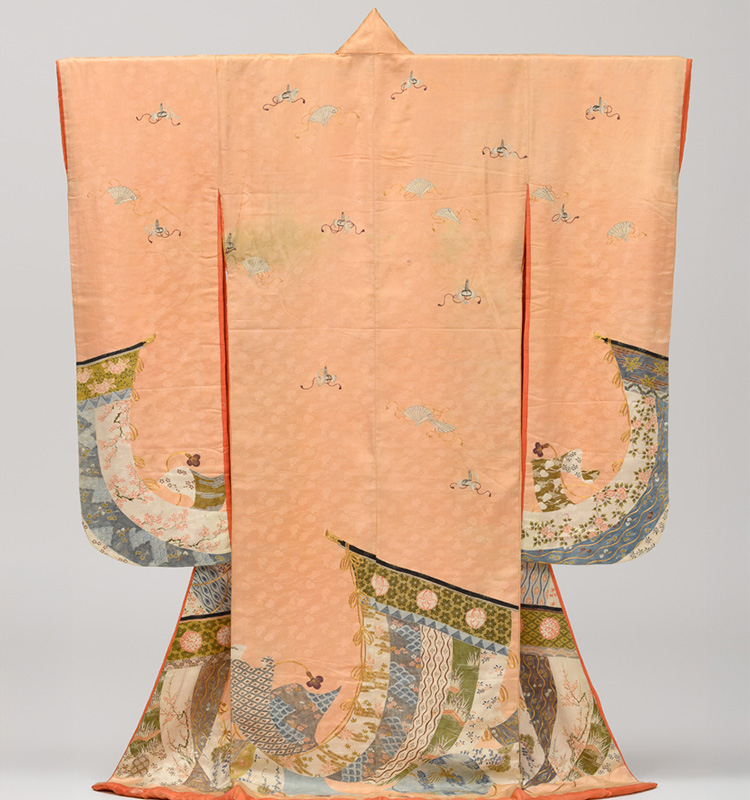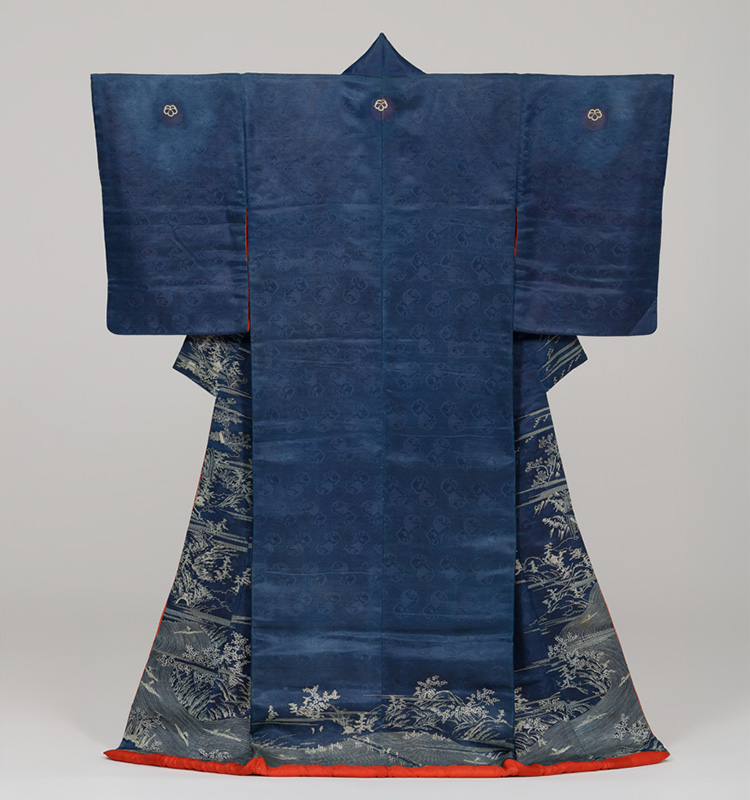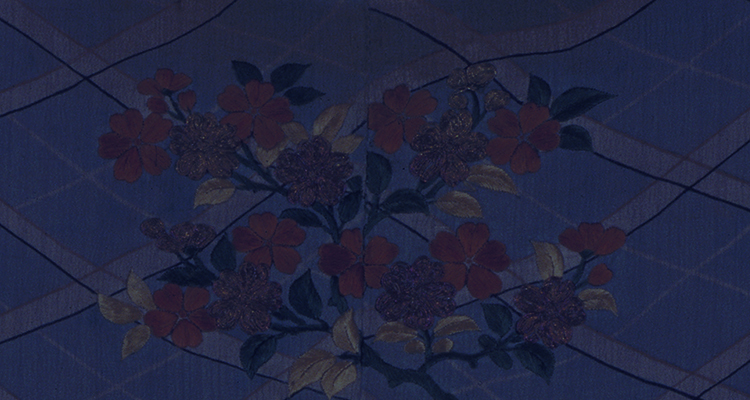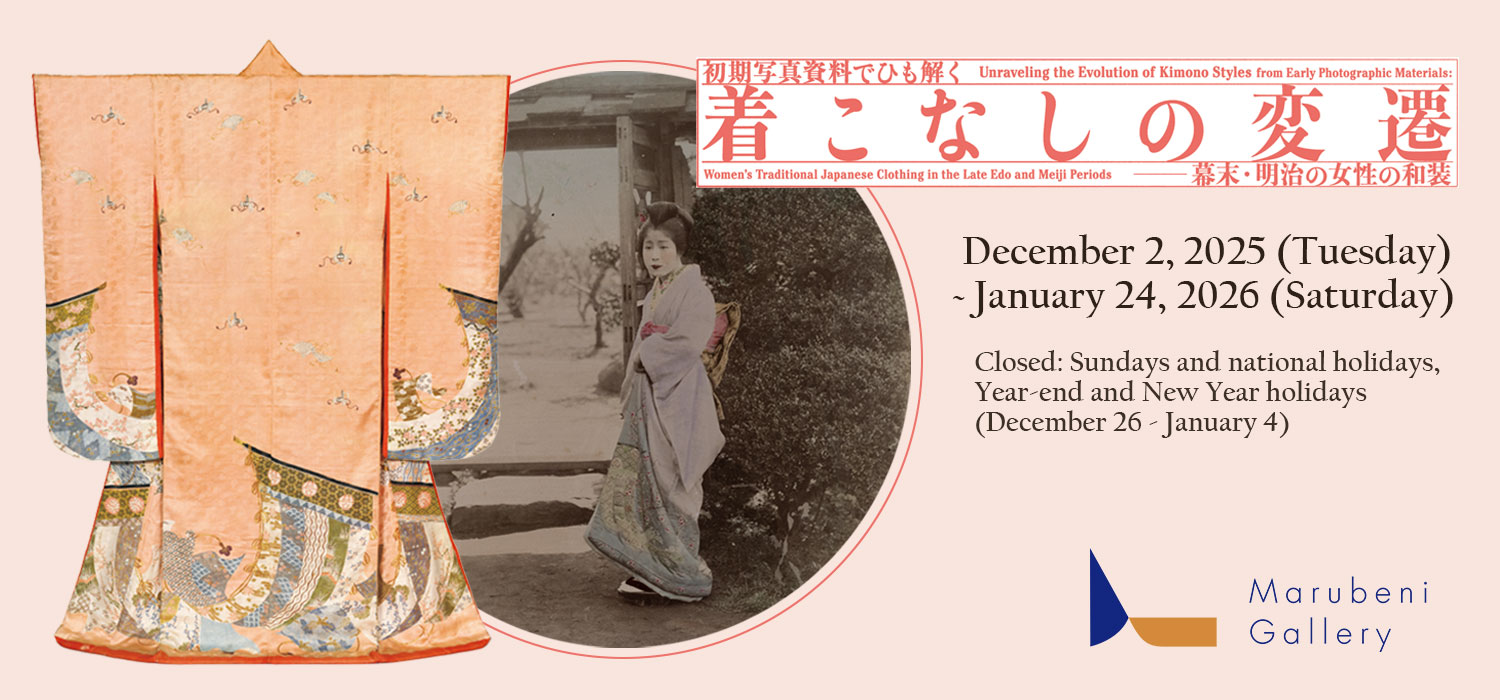
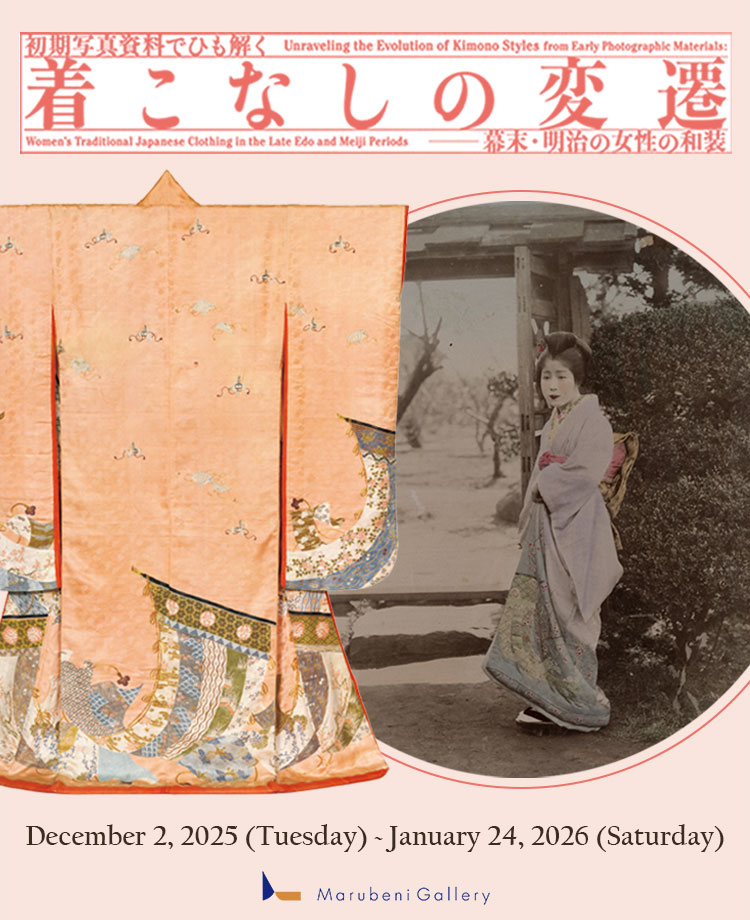
Pink Figured Satin Furisode with Kicho,Crowms,and Cypress Fans Late Edo period,19th century,Marubeni collection
(Women in a kimono) c.1883-1912.Tokyo photographic Art Museum
Exhibition
Unraveling the Evolution of Kimono Styles from Early Photographic Materials:
Women's Traditional Japanese Clothing in the Late Edo and Meiji Periods
December 2 2025 to January 24, 2026
Special Event:
Wearing Kimono Well. And Enjoyably!
Speaker: Hara Yumiko
Time: 2:00 p.m.–3:30 p.m.
Date: Saturday, January 17, 2026
Place: Third-floor hall, Marubeni Building
Fee: Free of charge
Hara took part in launching the fashion-and-lifestyle magazine An-An in 1970. She has been a pioneering stylist and has written extensively on how to enjoy wearing traditional Japanese apparel.
Widely accepted standards for traditional apparel and for wearing it took hold in Japanese society in the Edo period (1603–1868) and diversified greatly in the Meiji period (1868–1912). This exhibition is a first-of-its-kind endeavor to recreate the 19th-century wearing of kimono in reference to valuable photographic archives. The Edo period ended in a series of events that began with the arrival of Commodore Matthew Perry’s fleet in 1853 and concluded with the Meiji Restoration in 1868. That coincided with the forced opening of Japanese ports, which occasioned a surge in interchange with the United States and Europe.
A wave of westernizing modernization swept Japanese society. Western-style apparel became common, though principally among males. What modernization catalyzed for women’s fashion in the late 19th century was a heightened boldness and diversity in kimono. Not until the postwar period would western-style attire become daily wear for Japanese women. The design and wearing of kimono then became, conversely, subject to newly standardized guidelines.
This exhibition draws on the photographic technology that reached Japan in the late Edo period and on then-contemporary documents. It recreates the female side of the wearing of traditional Japanese fashion in that era and in the Meiji period. The recreation comes alive with actual kimono, obi sashes, and accessories from the eras covered. Here is an opportunity, born of Marubeni’s rich collection of kimono and assiduous research on textile dyeing, to view the wearing of kimono a century ago.
The Marubeni Gallery offers an audio guide through a service called VOXX.
This service is available for use via personal mobile devices. Wearing headphones is recommended when using this service so as not to disturb other patrons. For details on how to use VOXX, please see the instructional display inside the gallery.
-
December 2025
sun mon tue wed thu fri sat 12345678910111213141516171819202122232425262728293031OpenEventClose
-
January 2026
sun mon tue wed thu fri sat 12345678910111213141516171819202122232425262728293031OpenEventClose
All proceeds from admission fees will be donated to the Marubeni Foundation.
Next Exhibits (Tentative Title/Details):
Max Touret - A Hitherto Unknown Master of Post-Impressionism
March 17, 2026 (Tuesday) ~ May 23, 2026 (Saturday)
Access
3F Marubeni Tokyo Head Office 4-2, Otemachi 1-chome, Chiyoda-ku, Tokyo, Japan
Direct access from Takebashi Station Exit 3a underground passageway via the Otemachi ticket gates
(Tokyo Metro Tozai Line)
6-minutes walk from Otemachi Station Exit C2b (Tokyo Metro Chiyoda Line)
7-minutes walk from Jimbocho Station Exit A9 (Tokyo Metro Hanzomon Line, Toei Shinjuku Line & Mita Line)
*Please note that the gallery does not have parking facilities. Please use nearby paid parking lots or use public transport.




